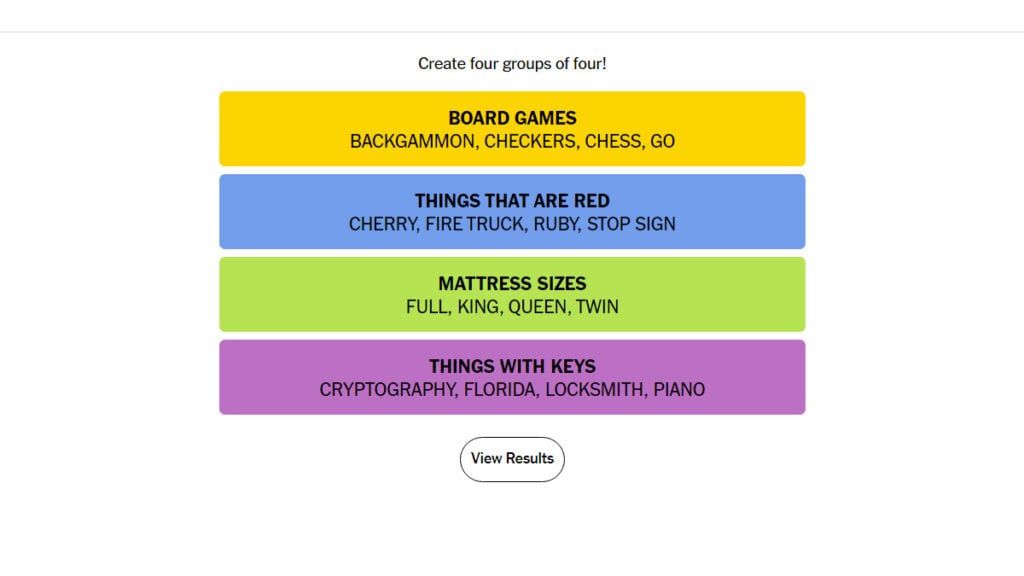
The Intricate World of NYT’s “Connections” Puzzles: A Journey into Words and Minds
Introduction
The New York Times’ “Connections” puzzles have captivated the minds of word enthusiasts worldwide, offering an intriguing blend of wordplay and lateral thinking. This article delves into the complexities of these puzzles, exploring their unique characteristics, the strategies involved in solving them, and the broader implications of their popularity.
The Puzzle’s Essence
A “Connections” puzzle consists of a grid of words, each of which is connected to the others by a hidden relationship. The solver’s task is to identify these relationships and fill in the grid with words that satisfy all the connections. The puzzles range in difficulty from easy to challenging, testing word knowledge, vocabulary, and logical reasoning.
Solving Strategies
Solving “Connections” puzzles involves a combination of techniques. Players often start by identifying words that are obviously related to each other, such as synonyms, antonyms, or words within the same semantic field. As the puzzle progresses, solvers must think creatively and use trial and error to find the less apparent connections. Lateral thinking is essential, as the relationships between words can be abstract or metaphorical.
Cognitive Benefits
Research has shown that solving “Connections” puzzles provides numerous cognitive benefits. These puzzles challenge working memory, enhance vocabulary, improve critical thinking skills, and foster divergent thinking. By engaging in this wordplay, individuals can sharpen their minds and improve their cognitive abilities.
Cultural Significance
The popularity of “Connections” puzzles extends beyond their cognitive benefits. These puzzles have become a cultural phenomenon, shared and discussed online and in social gatherings. They have sparked creativity and sparked conversations about language and wordplay. The puzzles’ ability to bridge generations and connect people from all walks of life highlights their universal appeal.
Criticisms and Perspectives
While “Connections” puzzles are widely enjoyed, they have also faced some criticism. Some argue that the puzzles can be overly challenging and frustrating, especially for those who struggle with wordplay. Additionally, the lack of clear guidelines for acceptable connections can lead to subjective interpretations and disputes over correct answers.
Despite these criticisms, the puzzles continue to attract a loyal following. Many players find the challenge rewarding and enjoy the mental workout it provides. Furthermore, the subjective nature of the connections allows for creativity and personal interpretation, making each puzzle a unique experience.
Conclusion
The New York Times’ “Connections” puzzles offer a complex and engaging challenge that combines wordplay, logic, and creativity. Their popularity attests to their universal appeal and their ability to stimulate cognitive function, foster social connections, and spark conversations about language. While these puzzles are not without their critics, their unique characteristics and the satisfaction they provide continue to make them a beloved pastime for word enthusiasts around the world.
As the world of crosswords and puzzles continues to evolve, the “Connections” puzzle stands as a testament to the enduring fascination with wordplay and the intricate connections that can exist between seemingly disparate concepts. Whether you’re a seasoned solver or a newcomer to the world of word puzzles, the “Connections” puzzle offers a captivating challenge that will test your wits and leave you pondering the boundless possibilities of language.
